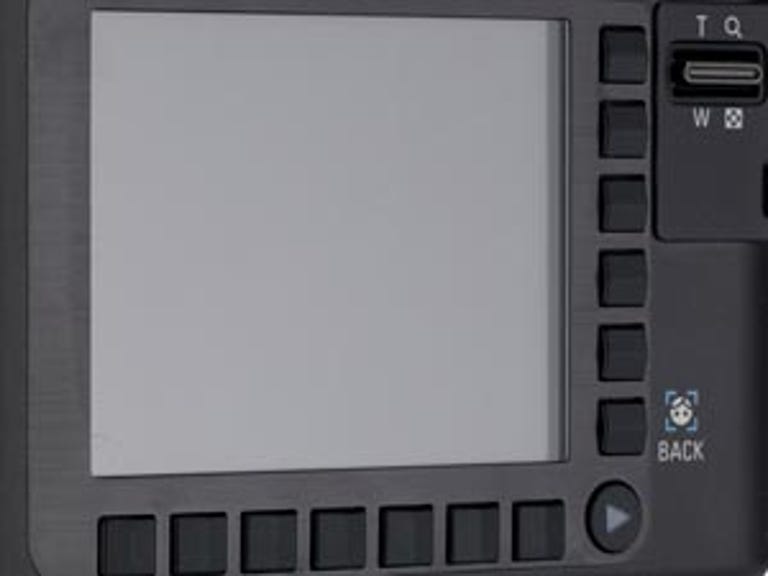 Why You Can Trust CNET
Why You Can Trust CNET Samsung NV15 review: Samsung NV15
The Samsung NV15 is one well-designed camera. With its 'smart touch' user interface, its touch-sensitive buttons make using the camera wonderfully simple, intuitive and tactile. A wealth of features are included to make your photos appear vibrant and crisp -- it's an exceptional all-rounder
We love it when camera manufacturers take a gamble on unusual and innovative features, but we also recognise that these gambles don't always pay off.
The Good
The Bad
The Bottom Line
The Samsung 10-megapixel NV15 is the latest in the NV line, known for its 'smart touch' user interface. The slinky NV15 is available now for around £160, but the interface will probably divide opinion.
Design
The NV series share a similar classy retro look. They all include solid black metal frames and a blue stripe around the lens. A pop-up flash, mode wheel and chunky hand grip complete the SLR-esque styling cues. These looks made us think the NV15 would be bigger, so we were pleased to find how compact it is.

The 64mm (2.5-inch) screen feels rather small, but it has higher resolution than most, plus three different lighting settings. We do like the slightly protruding vertical zoom switch, which has more travel than the flat buttons on many compacts. We also liked the single connection for charging the camera and transferring files. Our favourite thing about the NV15, however, is the way the control buttons work.
Features
We really like smart touch. The touch-sensitive buttons line the right-hand side and bottom of the screen. Pressing a button on one axis calls up a menu, from which you make your selection using the buttons on the opposite axis. The touch-sensitive buttons also operate as a slider for intuitive adjustment of options such as shutter speed and other shooting settings.
Once you have got the hang of it, it's a wonderfully simple, intuitive and tactile system. We love using it, especially in program and manual modes when aperture and shutter speeds can be adjusted. But the system is unconventional, so it is essential that you try the camera yourself if thinking of making a purchase.
The only time smart touch doesn't work is when selecting a scene mode, which would have been better served by a grid rather than a clunky horizontal menu.
Also included is a 3x optical zoom, face recognition, in-camera red-eye fix, aperture and shutter priority and one of the most satisfying shutter noises we've ever heard.
The Schneider-Kreuznach lens is equivalent to a somewhat mediocre 34mm on a 35mm camera at the wide end. Macro function allows you to get as close as 4cm from your subject.
Performance
We'd love for this stylish, clever camera to give equally stellar image
quality, but we were underwhelmed. Images are certainly decent,
but all that intuitive manual control doesn't seem capable of images as
crisp as some of the scene modes. Nonetheless, colours were vibrant and
detail stood up well. We felt the default sharpening was a little
brisk, but that's a matter of personal taste, and it is adjustable.
Speed is respectable, if not electrifying. Shutter lag is around 0.5 seconds, and shot-to-shot time averaged 1.6 seconds without flash. Continuous mode was a let-down, however, at 2.8 frames per second. Motion-capture mode captured up to 20 images in 2-second bursts, but only at a substantially lower resolution. We'd really prefer something in between these two shooting options.
Image quality
Noise was, as always, the major issue.
Images taken at the maximum ISO 3,200 were pebbledashed with so much
noise and smeared with so much noise reduction that they looked like
they'd been coloured with crayon. Even at speeds as low as ISO 200
lighter areas had a gritty feel. We also noticed some slight barrel
distortion (see picture above), but this was only noticeable when photographing regular
patterns such as the periodic table we use in our test shots.
Our underwhelmed take on the NV15's performance is more a product of our high expectations for this great camera than a reflection of any real weakness. Image quality and speed are certainly respectable for a compact, and if that sounds like faint praise, it's only because we found everything else about the NV15 to be so exceptionally designed.
Conclusion
Users unwilling to skate the learning curve required by the
NV15's unusual interface will probably be happier with a more
conventional camera, such as the Casio Exilim Zoom EX-Z1080. Another feature-rich alternative with an intuitive interface is the Ricoh Caplio R7,
which boasts a simple mini joystick. But the NV15's smart touch system
is definitely worth getting to grips with as part of an outstandingly
well-designed compact camera.
Edited by Jason Jenkins
Additional editing by Shannon Doubleday


